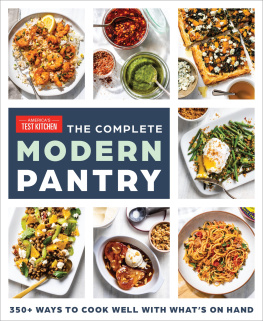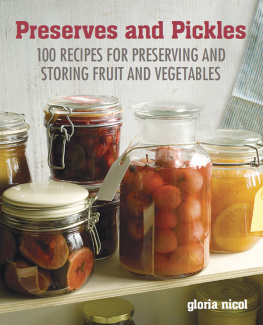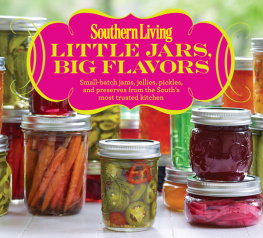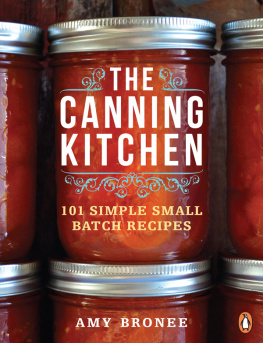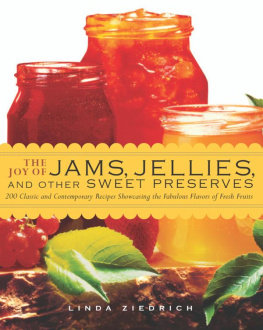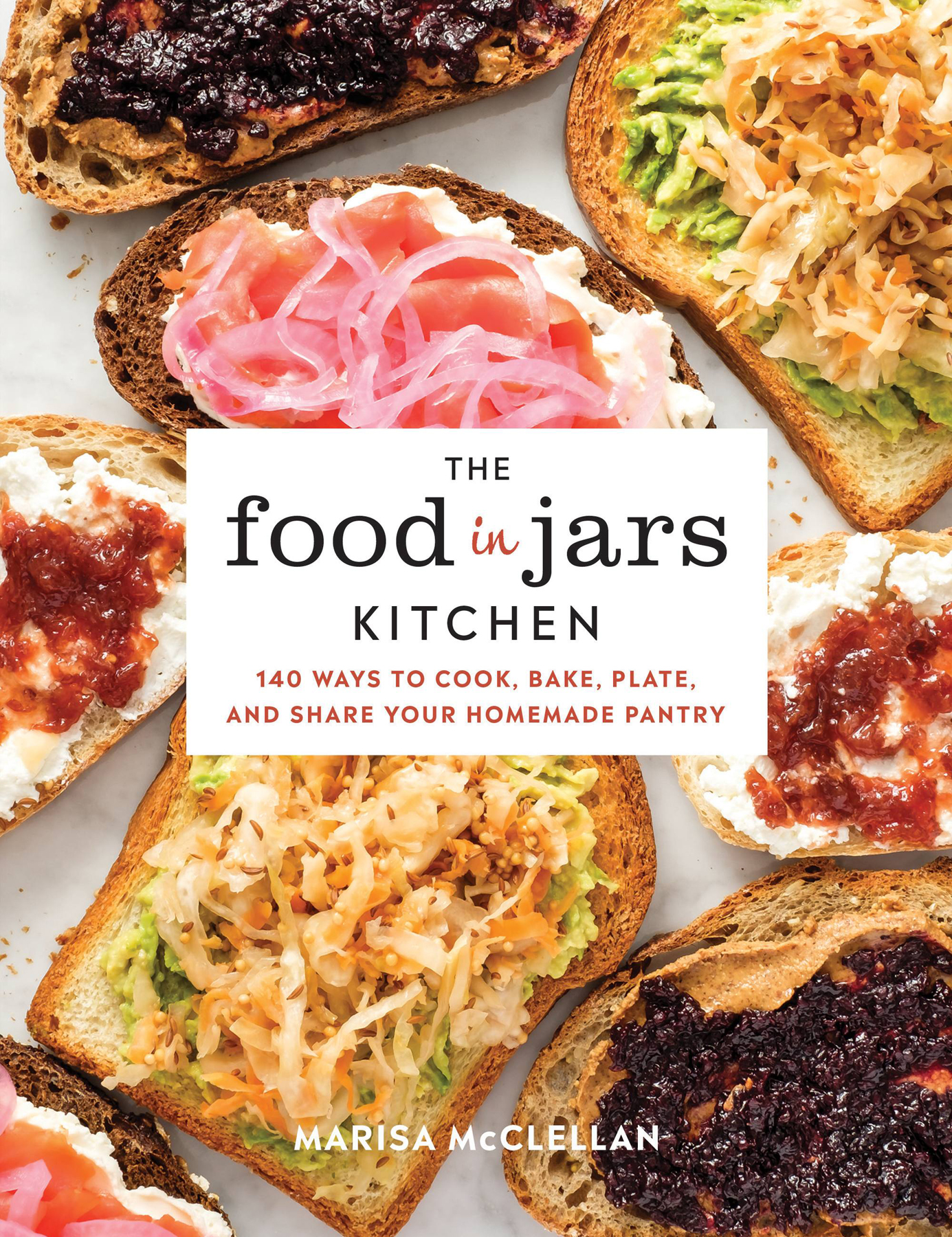This book is dedicated to my sister, Raina, whose wild creativity and love are gifts I will never stop appreciating.
LET ME TELL YOU ABOUT A CONVERSATION IVE HAD REPEATEDLY over the years with my friends, neighbors, blog readers, canning students, and anyone else who learns what I do for a living. After a moment or two of chatting, they begin to confess that they love canning, but have trouble using up the contents of their homemade pantry. With a resigned shrug, they say, After all, I can only eat so much toast.
Once I hear that, I leap into the conversation and quickly rattle off half a dozen ways that I use my preserves beyond toast. I tell them how to combine aromatic vegetables, fresh or dried herbs, vinegar, and jam to create a quick sweet-and-sour braising medium for meat and poultry. I describe a savory goat cheese tart featuring tomato or onion jam.
I talk them through various salads and side dishes that incorporate diced pickles and mustard vinaigrettes. We contemplate all the ways one can combine preserves with yogurt to create parfaits, dips, sauces, and spreads. Without fail, they go off brimming with ideas and feeling like their collection of jams and pickles is an asset rather than a millstone.
When I first started writing about canning and preserving and teaching classes on the subject, I thought my mission ended once my readers and students understood the mechanics of the boiling water bath. I believed that once people had a full pantry, theyd be well on their way to a more independent and homemade life.
However, I quickly discovered that I was wrong. I see now that my job is to help people complete the circle. You may have heard of the concept of cradle-to-grave design. I think of this as empty-jar-to-empty-jar education. I want everyone to understand and be able to embrace the full lifecycle of a jar of jam, jelly, chutney, or pickles. I believe that a pantry full of homemade jams, jellies, salsas, and pickles is a boon, a gateway to easy home cooking and tasty baked goods, and a huge help when it comes to entertaining creatively.
The mission of this book is to show you how to take your various preserves well beyond the typical applications, with both flexible formulas and step-by-step blueprints. The recipes included in this volume have been designed so that they dont require specific preserves to work. Instead, they call for things like a cup of unsweetened applesauce, half a cup of runny berry jam, or two tablespoons of chopped pickles. That is by design, to give you optimum flexibility so as to use up the contents of your individual pantry (whether homemade, gifted, or bought at a farmers market or grocery store).
Because there will always be some variability between the jams that I make and the ones in your pantry, these recipes have been cross-tested by a panel of home cooks and canners with a variety of homemade and store-bought preserves, all with an eye toward pinning down any issues that may arise and making the recipes as foolproof as possible. Some of the recipes include a lot of narrative instruction as a result. Please do read the recipes carefully and thoroughly before diving in, so that your process can be informed by our hard collective work.
Much of the food in this book is the kind that many of us ate as kids. Its home cooked, cozy, and occasionally homely. While there are plenty of things that are worthy of a dinner party, the fact of the matter is that when youre working with various jams, chutneys, and fruit butters, the end result is often a dish of delicious food in varying shades of brown. I embrace this aspect of these dishes because it recalls earlier times, when everything on the table was homemade, homegrown, or local, out of necessity rather than trend. To borrow a phrase from the engineering trade, its a feature, not a bug.
THE RECIPES IN THIS BOOK ARE, FOR THE MOST PART, BASIC HOME cooking. If you have a kitchen with a fairly conventional set of cookware and tools, you should be ready to put this book through its paces. There are a few things I do want to call out especially, as I use them a lot in these pages and you might not already have them.
Rimmed baking sheets in 18 13 inch/46 33 cm and 13 9 inch/33 22 cm, otherwise known as half and quarter sheet pans, respectively. Not a day goes by when I dont reach for one or the other. The quarter sheet pans are what I use to bake the Shortbread Bars ().
Removable bottom tart pans. These are used in the Pies and Tarts section () and will make your homemade tarts look beautiful and professional.
Springform pan. Nothing works as well as this pan for the Flourless Chocolate Cake ().
Offset spatula. I like the smaller versions of these handy tools. Best thing around for smoothing cake batter in the pan.
Silicone spatulas. Everyone has a favorite stirring tool and mine are fully encased silicone spatulas that can go in the dishwasher. I have several so that theres always a clean one when I need it.
Measuring cups. A nesting set of graduated measuring cups and a few large-capacity plastic or glass measuring cups will always be useful.
A digital scale. Theres no piece of kitchen gear that I reach for more than my OXO 11-pound/5 kg capacity digital scale.
Immersion blender. Pure soups and sauces without having to clean a food processor bowl or blender container!
Cookie scoops. I have them in 1- and 3-tablespoon sizes and could not love them more.
Beyond those things, there are a few tools that are nice to have that I will reference on occasion in these recipes. Included in that list are a few sharp knives of various sizes, a sturdy peeler, a rasp-style zester, and a fine-mesh strainer.


